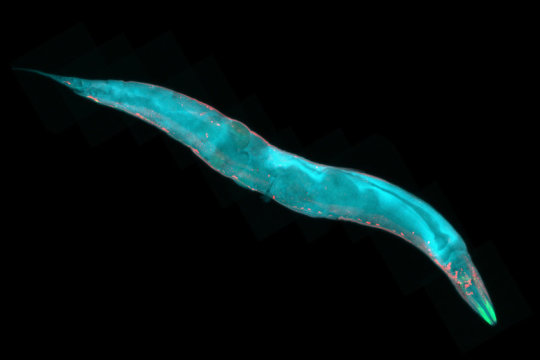Biophysicists use machine learning to understand, predict dynamics of worm behavior

Biophysicists have used an automated method to model a living system — the dynamics of a worm perceiving and escaping pain. The Proceedings of the National Academy of Sciences (PNAS)published the results, which worked with data from experiments on the C. elegans roundworm.
"Our method is one of the first to use machine-learning tools on experimental data to derive simple, interpretable equations of motion for a living system," says Ilya Nemenman, senior author of the paper and a professor of physics and biology at Emory University. "We now have proof of principle that it can be done. The next step is to see if we can apply our method to a more complicated system."
The model makes accurate predictions about the dynamics of the worm behavior, and these predictions are biologically interpretable and have been experimentally verified.
Collaborators on the paper include first author Bryan Daniels, a theorist from Arizona State University, and co-author William Ryu, an experimentalist from the University of Toronto.
The researchers used an algorithm, developed in 2015 by Daniels and Nemenman, that teaches a computer how to efficiently search for the laws that underlie natural dynamical systems, including complex biological ones. They dubbed the algorithm "Sir Isaac," after one of the most famous scientists of all time — Sir Isaac Newton. Their long-term goal is to develop the algorithm into a "robot scientist," to automate and speed up the scientific method of forming quantitative hypotheses, then testing them by looking at data and experiments.
For More: https://www.sciencedaily.com/releases/2019/03/190327123848.htm

